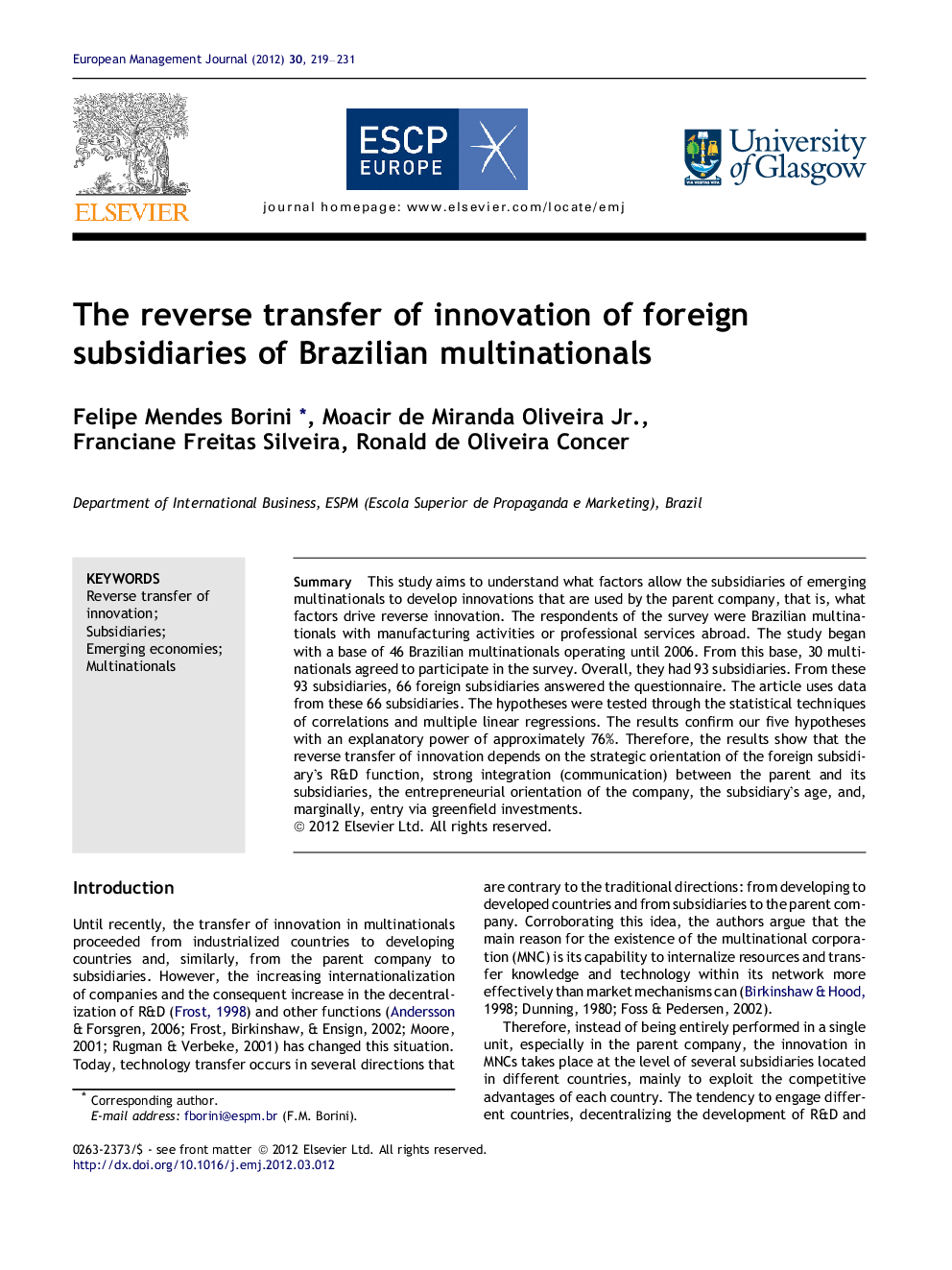| Article ID | Journal | Published Year | Pages | File Type |
|---|---|---|---|---|
| 1015030 | European Management Journal | 2012 | 13 Pages |
SummaryThis study aims to understand what factors allow the subsidiaries of emerging multinationals to develop innovations that are used by the parent company, that is, what factors drive reverse innovation. The respondents of the survey were Brazilian multinationals with manufacturing activities or professional services abroad. The study began with a base of 46 Brazilian multinationals operating until 2006. From this base, 30 multinationals agreed to participate in the survey. Overall, they had 93 subsidiaries. From these 93 subsidiaries, 66 foreign subsidiaries answered the questionnaire. The article uses data from these 66 subsidiaries. The hypotheses were tested through the statistical techniques of correlations and multiple linear regressions. The results confirm our five hypotheses with an explanatory power of approximately 76%. Therefore, the results show that the reverse transfer of innovation depends on the strategic orientation of the foreign subsidiary’s R&D function, strong integration (communication) between the parent and its subsidiaries, the entrepreneurial orientation of the company, the subsidiary’s age, and, marginally, entry via greenfield investments.
► Original survey with foreign subsidiaries of Brazilian multinationals. ► Emerging multinationals are seeking innovation abroad. ► The peculiarities of the reverse transfer of innovation at emerging multinational.
